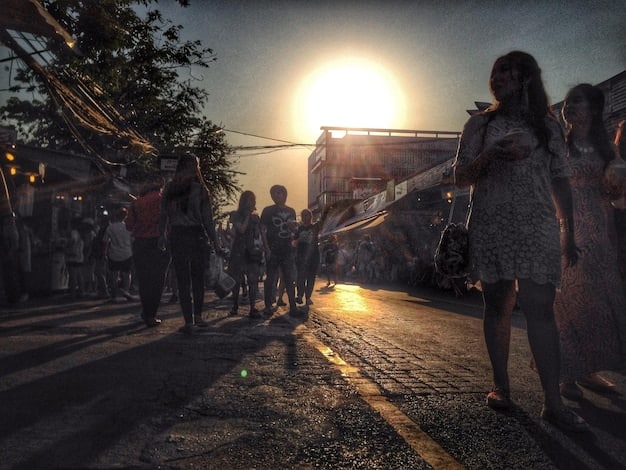The Dark Side of Paradise: Social Commentary in Latin American Crime Dramas

The Dark Side of Paradise explores how Latin American crime dramas use narratives of violence and corruption to critique social and political realities, reflecting deeper issues of inequality and historical trauma.
Latin American crime dramas have surged in popularity, captivating audiences with their gritty realism and complex characters. Beyond the suspense and action, these shows offer a powerful lens through which to examine the social and political realities of the region. This article unpacks the dark side of paradise: unpacking the social commentary in Latin American crime dramas, exploring how these narratives reflect and critique the region’s history, inequality, and persistent struggles.
Beyond Entertainment: Social Reflections in Crime Dramas
Latin American crime dramas are not merely escapist entertainment. They often serve as powerful social commentaries, reflecting the complex realities of life in the region. This section explores how these dramas delve into prevalent social issues, providing a raw and often unflinching portrayal of Latin American societies.
Corruption as a Systemic Problem
Many crime dramas highlight corruption not as an isolated incident, but as a deeply ingrained systemic issue. Characters often navigate a world where bribery, extortion, and abuse of power are commonplace.
Inequality and Social Stratification
These shows frequently depict the vast inequalities that exist in Latin American societies, where wealth and power are concentrated in the hands of a few, while many struggle in poverty. The desperation and lack of opportunity often drive individuals into a life of crime.
- Highlighting the stark contrast between the wealthy elite and the impoverished masses.
- Examining how limited access to education, healthcare, and employment contributes to crime.
- Showing how social mobility is often restricted by systemic barriers and corruption.
Latin American crime dramas use these narratives to question the status quo and expose the underlying social and economic factors that contribute to criminal activity. By portraying these harsh realities, the shows spark dialogue and raise awareness about the challenges facing Latin American societies.

Historical Trauma and its Impact on Crime
The history of Latin America is marked by periods of political instability, violence, and social upheaval. Crime dramas often explore how these historical traumas continue to shape the present, influencing the motivations and actions of characters.
The Legacy of Dictatorships and Political Violence
Dictatorships and periods of political violence have left lasting scars on Latin American societies, fostering a culture of impunity and mistrust. Crime dramas frequently depict the consequences of these periods, including corruption, human rights abuses, and the erosion of democratic institutions.
The Impact of Colonialism and Imperialism
Colonialism and imperialism have contributed to the economic exploitation and social fragmentation of Latin America. These historical forces have created conditions of inequality and dependence, which continue to fuel crime and instability.
These series often remind us how important it is understand the historical context to fully grasp the complexities of contemporary Latin American crime dramas. By exploring the roots of violence and corruption, these shows offer a deeper understanding of the challenges facing the region.
Gender Dynamics and Machismo in Crime Narratives
Gender roles and power dynamics play a significant role in Latin American crime dramas. These shows often explore the complexities of machismo, patriarchy, and the challenges faced by women in a male-dominated world.
The Portrayal of Female Characters
While some dramas may perpetuate stereotypes, others offer nuanced portrayals of female characters who challenge traditional gender roles and assert their agency in the face of adversity. These women often navigate dangerous and complex situations, demonstrating resilience and strength.
Machismo and Violence against Women
Machismo, the exaggerated sense of masculinity, is frequently depicted as a driving force behind violence and oppression in these shows. Crime dramas often explore the consequences of machismo, including domestic violence, sexual assault, and the objectification of women.
- Examining how women are often marginalized and silenced in patriarchal societies.
- Highlighting the courage and resilience of women who challenge these norms.
- Exploring the complexities of female characters who operate in the criminal underworld.
By exploring gender dynamics, Latin American crime dramas shed light on the systemic inequalities and challenges faced by women in the region. These shows can provoke important discussions about gender equality, empowerment, and the need to challenge harmful cultural norms.

The Role of Music and Sound in Setting the Atmosphere
Music and sound design are integral components in creating the distinctive atmosphere of Latin American crime dramas. The sounds add to the realism, emotional resonance, and cultural context of the stories being told in the series and movies.
Authenticity and Regional Identity
Soundtrack selections featuring local artists can enhance the show’s authenticity and provide depth, bringing the audience into the world of series. Music can strengthen an immersive cultural environment for the watchers.
Sounds That Reinforce Drama
Loud and unexpected noises add thrill to scenes that are suspenseful, while background melodies can enhance the audience’s emotional link with plot events. Well-executed sound design is very important for keeping viewers interested and emotionally spent.
Regardless of whether it is cumbia or reggaeton, regional music in Latin American crime dramas sets the mood and deepens the viewer’s awareness as a complement to the overall narrative.
Filming Locations Enhance Storytelling
The sites where films are made play an essential part in establishing the atmosphere of Latin American crime dramas, offering not only authenticity but also an extra depth of description that helps the story unfold.
Portraying Reality in Urban Settings
Urban settings in series are used to showcase the harsh realities of cities and provide a peek into daily life for marginal populations. Locations like favelas and vibrant metropolitan streets become living representations of the economic and social conditions that promote violence and crime.
Rural Landscapes
Landscapes in rural areas that are used as filming sets provide an essential backdrop, highlighting how they are related to the criminal acts that take place in such isolated locales. These places stress feelings of isolation and sometimes provide breathtaking contrast against the criminal behaviors they conceal.
Filming locations help describe the story’s fundamental ideas and motifs by becoming symbols in the narrative, offering a richness beyond simple visual appeal; they can allude to poverty, unrest, or social division while enhancing the show’s narrative power.
Ethical Dilemmas and Moral Ambiguity
Latin American crime dramas frequently grapple with complex ethical dilemmas and moral ambiguities, challenging viewers to question their own values and beliefs. Characters often face difficult choices with no easy answers, blurring the lines between right and wrong.
The Justification of Criminal Behavior
Some dramas explore the motivations behind criminal behavior, presenting characters as victims of circumstance who are forced to make difficult choices in order to survive. This raises questions about the extent to which social and economic factors can justify criminal actions.
The Consequences of Violence and Corruption
These shows also depict the devastating consequences of violence and corruption, highlighting the human cost of crime and the erosion of social trust. By exploring these themes, crime dramas can spark important conversations about justice, morality, and the responsibility of individuals and institutions.
The genre provokes meaningful conversations about morality and justice, encouraging us to examine our own perspectives and question our presumptions about crime and punishment from all angles.
| Key Aspect | Brief Description |
|---|---|
| 🎭 Social Commentary | Dramas reflect societal issues like inequality & corruption. |
| 🕰️ Historical Impact | Past political events influence current crime. |
| 🚺 Gender Dynamics | Explores gender roles and challenges in male-dominated settings. |
| 🎶 Music & Sound | Enhances atmosphere & emotional connection. |
Frequently Asked Questions (FAQs)
▼
These dramas resonate with audiences due to their raw portrayal of complex social issues and compelling characters, reflecting realities many can relate to or find intriguing due to their cultural context.
▼
Many shows delve into the legacies of dictatorships, colonialism, and political violence, demonstrating how these historical events continue to influence present-day crime and societal issues.
▼
Music is integral, setting the atmosphere through authentic regional sounds that enhance emotional connections and cultural immersion, thereby enriching the storytelling experience.
▼
Women are depicted in diverse ways, from upholding traditional gender roles to challenging them. Some characters exhibit resilience and agency, navigating a male-dominated, often dangerous, underworld.
▼
These series often explore moral ambiguities by positioning characters in scenarios that question justification for criminal behavior. It also explores the broad consequences of both endemic corruption and general violence.
Conclusion
Latin American crime dramas provide more than just entertainment; they serve as a mirror reflecting complex social and political realities. By understanding the historical context, gender dynamics, and ethical dilemmas presented, viewers can gain a deeper appreciation for the rich narratives and profound social commentary embedded within these compelling shows.





